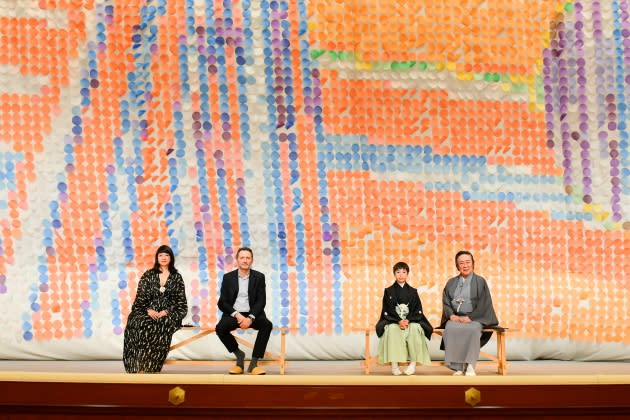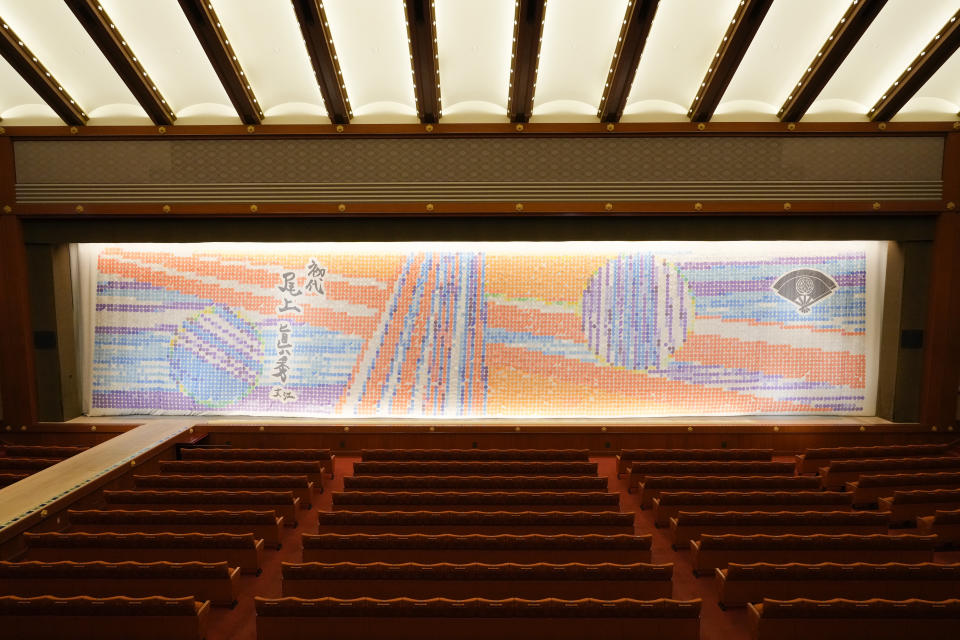Atelier Montex Creates Ceremonial Curtain for Kabuki Actor’s Debut

CURTAIN RAISER: Paris-based specialty embroiderer Atelier Montex has worked with French contemporary artist Xavier Veilhan at the behest of Chanel to create the backdrop for the formal naming ceremony of actor Maholo Terajima, the first French-Japanese kabuki performer.
The 10-year-old actor, who started his career aged 4, will take the stage name of Onoe Maholo I on Tuesday, when he makes his debut in a play titled “Oto Kiku Maholo no Wakamusha” (or Maholo, the young warrior of Otowaya in Japanese), at Tokyo’s Kabuki-za theater as part of the Danjuro-Kikugoro festival or “Dankikusai” that runs until May 27.
More from WWD
45 Times Celebrities Stunned in Karl Lagerfeld Designs On the Red Carpet
First Look at Chanel's New Handbag Campaign Starring Blackpink's Jennie Kim
The monumental traditional “iwai maku” curtain that spans the length of the stage features an abstract pixelated motif alongside Terajima’s name and family crest, in a design imagined by Veilhan.
For Aska Yamashita, artistic director of the Chanel-owned embroidery specialist, this project had “a sentimental value with a strong symbolism,” given her dual French and Japanese heritage. “Discovering and creating a connection with half of my origins the year I turn 50 — being more French than Japanese in my daily life — to celebrate young Maholo, a rare binational actor to make his official debut in kabuki, is a source of great pride,” she told WWD ahead of the ceremony.

She described working with Veilhan as a “beautiful encounter” that resulted in an intricate mix of traditional and novel techniques.
Some 8,900 organza sequins in a multicolored palette were laser-cut and individually stitched, while Terajima’s name and family crest were embroidered using a Cornely machine to achieve a trompe-l’oeil calligraphy effect.
The 25.4-meter-long and 5.3-meter-high curtain was a challenge that required 800 hours to complete, and had to be worked as 12 distinct segments. “Rather than working on tables as we normally would to print the embroidery design, we had to work on the ground,” recalled Yamashita. “For the different organza sequins, we had to unroll and re-roll the panels on a table large enough for 3-meter-wide segments.”
Terajima is the son of award-winning Japanese actress Shinobu Terajima and French art director Laurent Ghnassia; and grandson of kabuki legend Onoe Kikugoro VII, who was designated a Living National Treasure by the Japanese government in 2003.
Originating in the 17th century Edo period, kabuki performances combine drama, dance and music, with male actors playing roles of any gender and age, using highly stylized costumes, masks and makeup to embody each character.
Best of WWD


